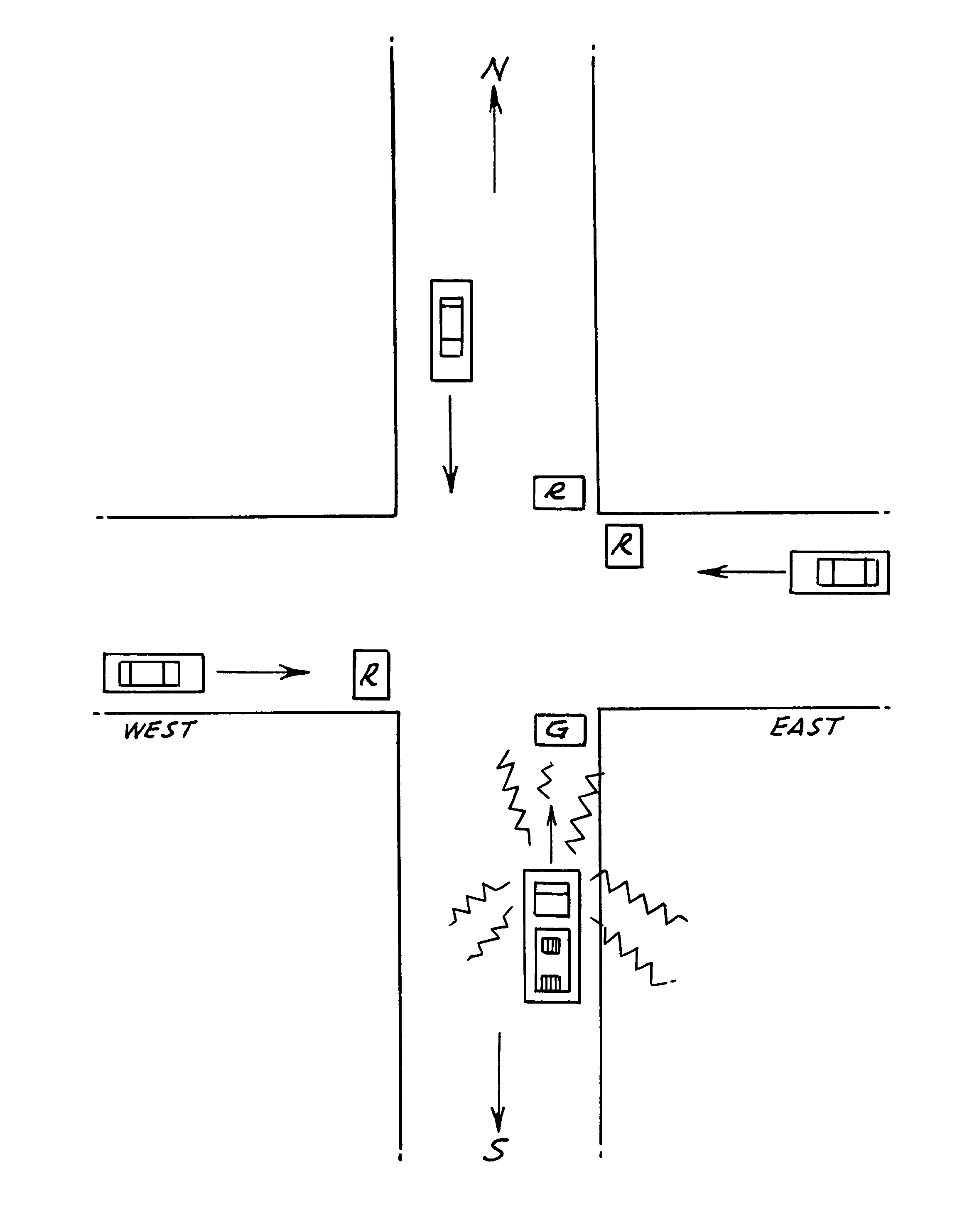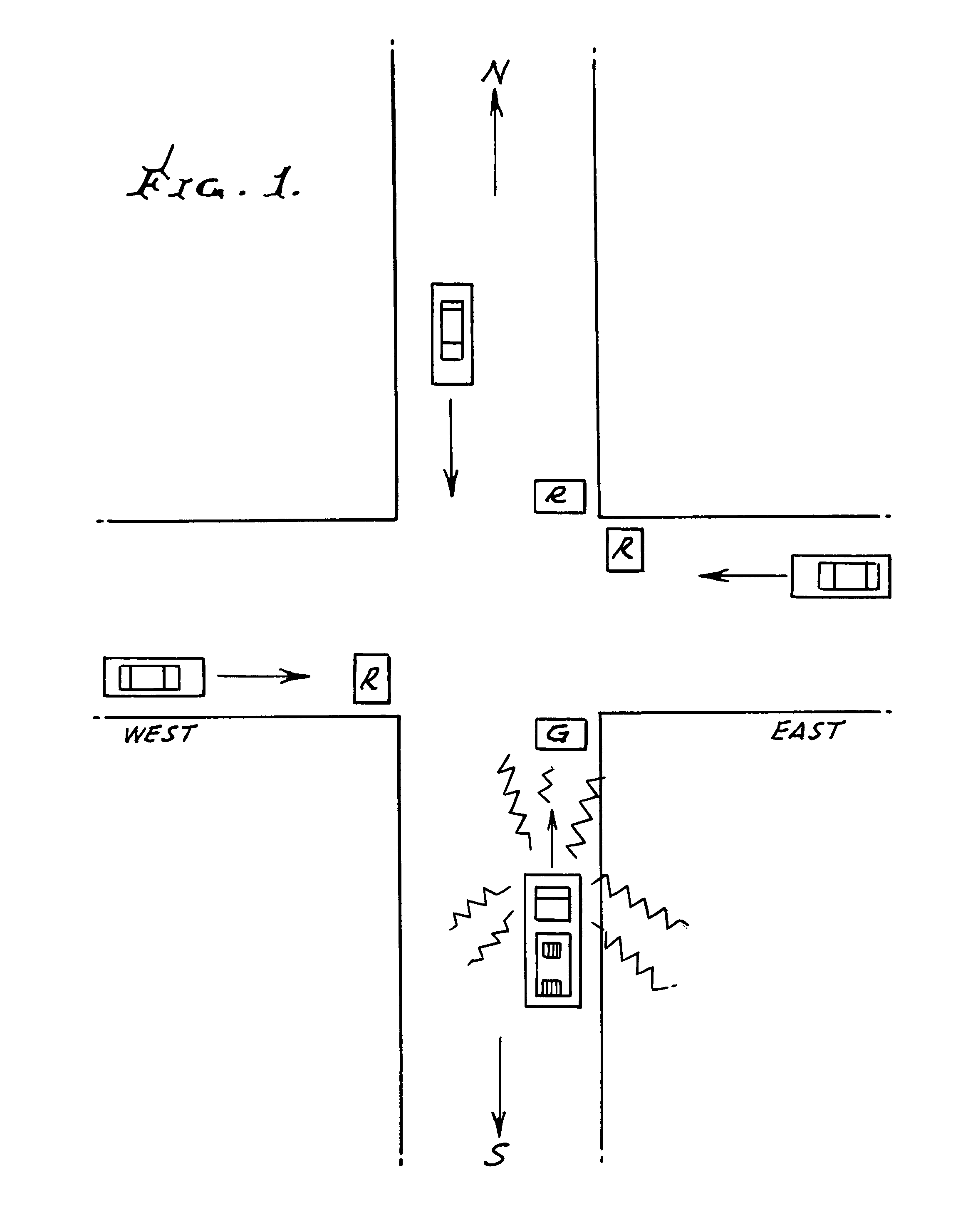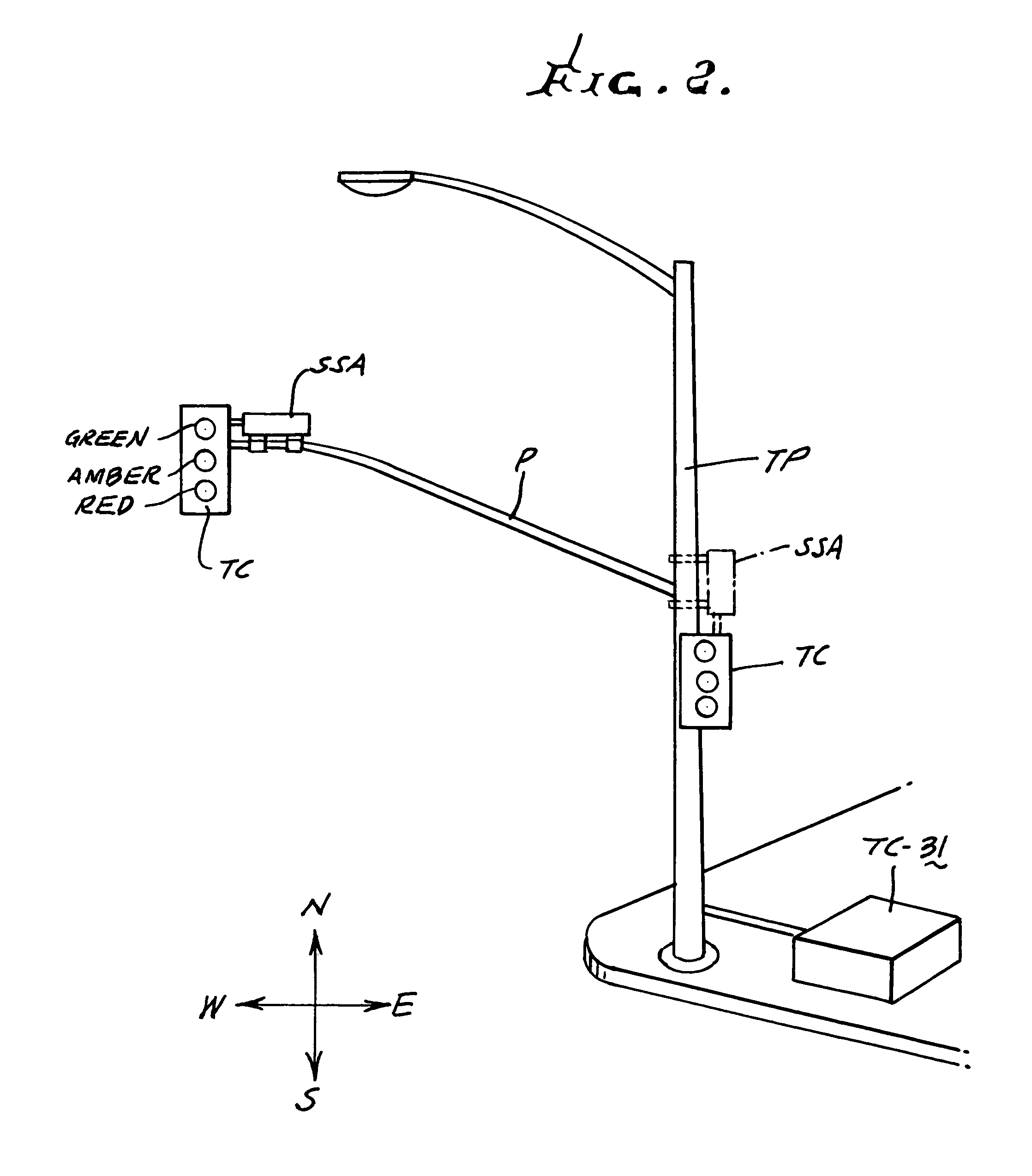Methods and apparatus for electronically detecting siren sounds for controlling traffic control lights for signalling the right of way to emergency vehicles at intersections or to warn motor vehicle operators of an approaching emergency vehicle
a technology of traffic control lights and siren sounds, which is applied in the direction of road vehicle traffic control, controlling traffic signals, instruments, etc., can solve the problems of no known commercially available, reliable siren sensor systems presently available for controlling traffic control lights at intersections, and relatively expensive circuit installation, so as to achieve maximum frequency spectrum sensitivity, eliminate extraneous sounds, and improve the effect of sound discrimination
- Summary
- Abstract
- Description
- Claims
- Application Information
AI Technical Summary
Benefits of technology
Problems solved by technology
Method used
Image
Examples
Embodiment Construction
[0033]At the outset it should be recognized that the siren sounds emitted by most current American sirens fall within the range of 600-1600 Hertz. This frequency range is represented in FIG. 3 by the A to B frequency range, i.e. the “low A” frequency and the “high B” frequency. The repetition rate of these siren frequencies vary, as is well known, depending on whether the siren is a “wail” or a “yelp” type of siren. The present invention eliminated the need to take into consideration the repetition rate of the siren frequencies by advantageously selecting frequencies to be processed by the siren sensor system of the present invention, identified in FIG. 3 as the A′ and B′ frequencies. These frequencies can be considered for the present invention as the high B′ frequency being 1300 cycles per second and the low A′ frequency as 900 cycles per second. The selection of these frequencies is preferable to sensing the outer limits A and B of the siren frequencies as they are more reliably ...
PUM
 Login to View More
Login to View More Abstract
Description
Claims
Application Information
 Login to View More
Login to View More - R&D
- Intellectual Property
- Life Sciences
- Materials
- Tech Scout
- Unparalleled Data Quality
- Higher Quality Content
- 60% Fewer Hallucinations
Browse by: Latest US Patents, China's latest patents, Technical Efficacy Thesaurus, Application Domain, Technology Topic, Popular Technical Reports.
© 2025 PatSnap. All rights reserved.Legal|Privacy policy|Modern Slavery Act Transparency Statement|Sitemap|About US| Contact US: help@patsnap.com



